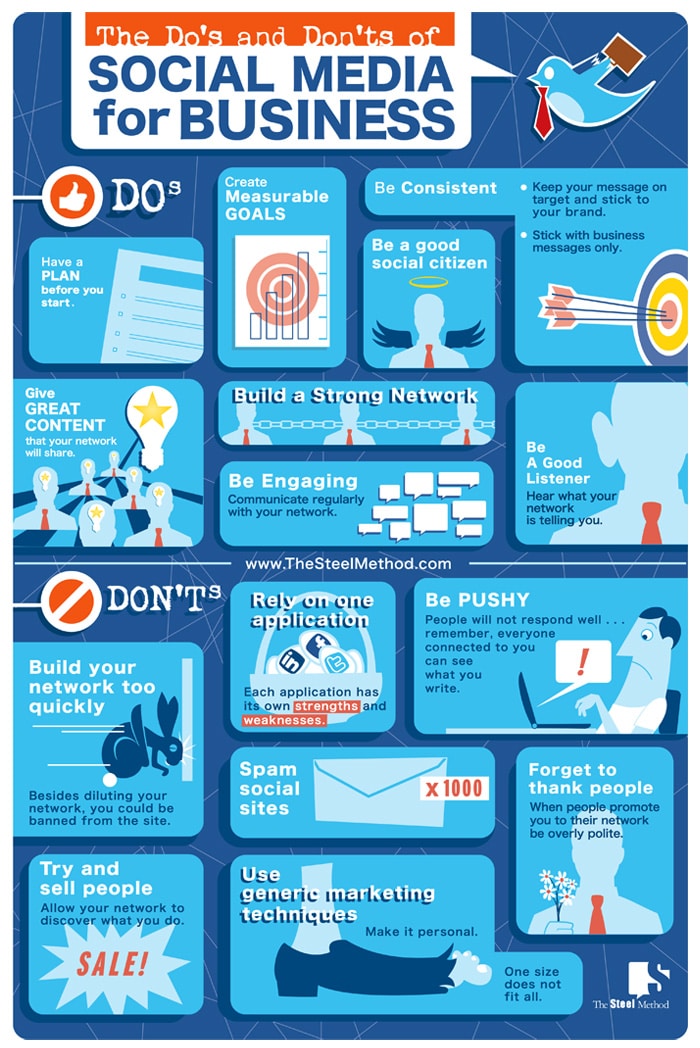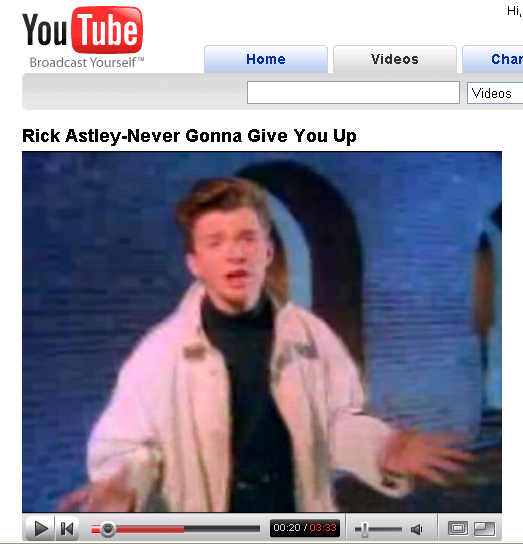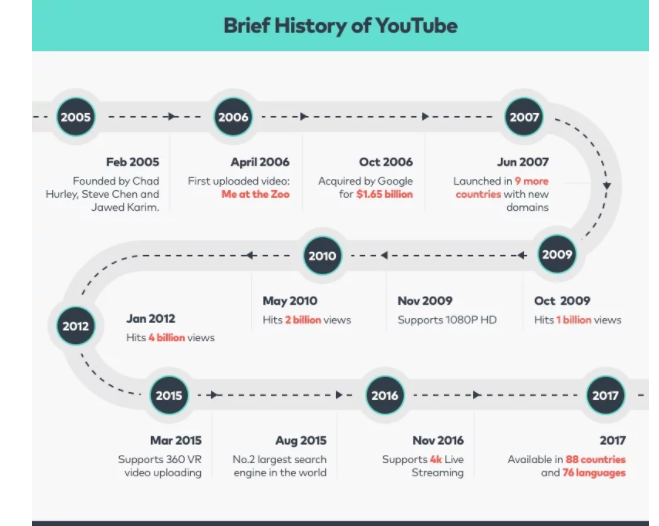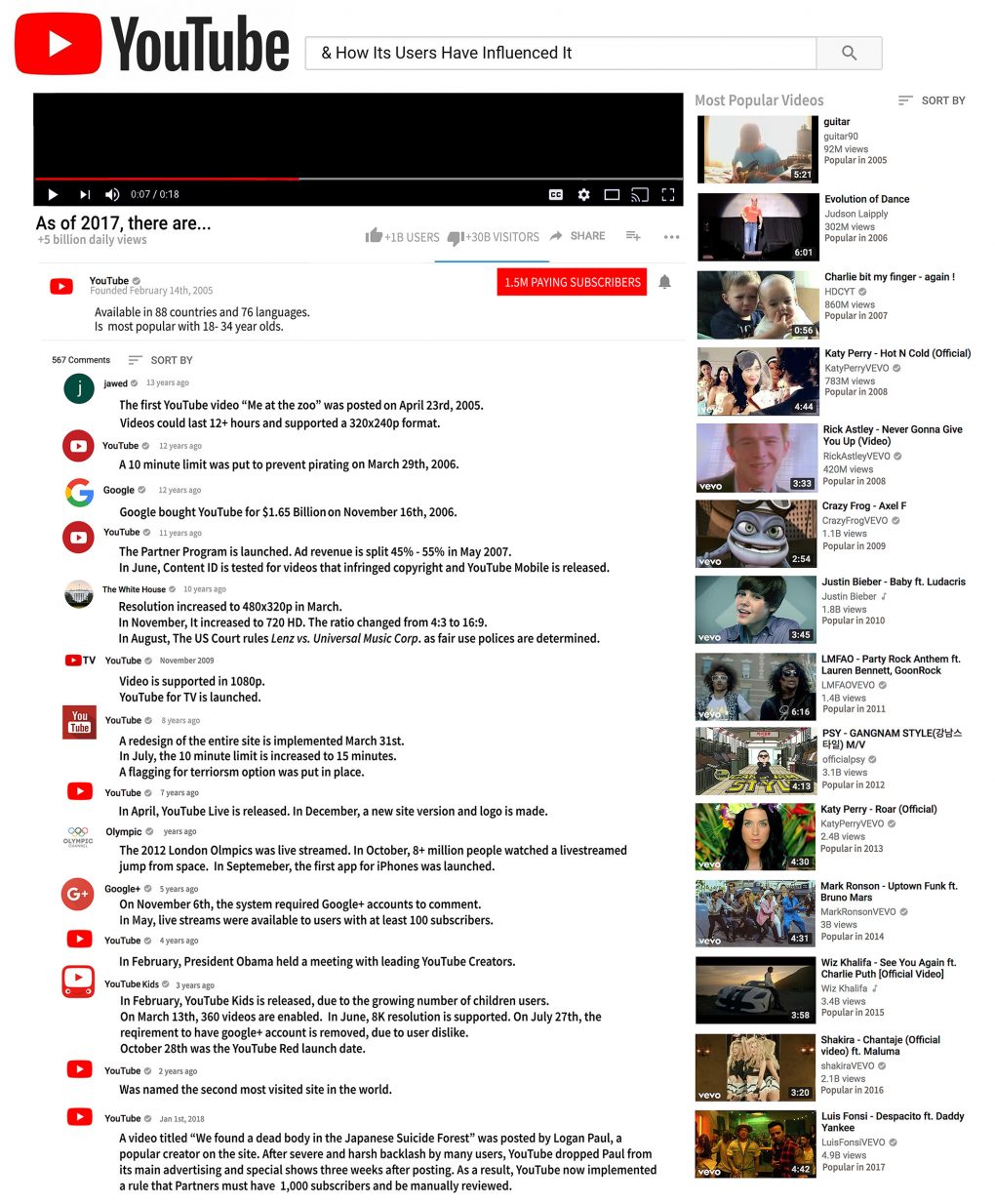Initially, the idea I had for this project was about one of the most iconic pieces of visual culture in 2008. The Obama Hope poster was a notable visual piece from my childhood. I hoped to write about how I felt that the poster change political views, but after reviewing with others, it didn’t work out.
I went back to the drawing board, and found that video sharing platforms like YouTube was a whole form of visual culture in itself. I decided to focus on Youtube and how the site has evolved and changed due to its users/creators & how they shaped the interface and promoted materials as a whole. I also wanted to focus on how YouTube responded to successful trends in its lifetime, such as implementing Vevo due to rising views and quality of music videos.
The goal of this project would be to inform, as well as summarize how YouTube changed and evolved over the years. I would’ve preferred to focus on the demographics of users, but there were very few legitimate statistics I could find.
Thesis: Video media platforms are one of the most popular and most influential forms of media in our culture, due to their rapid combination of visual and auditory communication, information and viewpoints.
Bibliography:
Desmet, Christy. “Teaching Shakespeare with YouTube.” The English Journal 99, no. 1 (2009): 65-70. http://www.jstor.org/stable/40503329.
This journal discusses and evaluates the worth and potential of employing Youtube as a teaching resource, particularly, in teaching the works of Shakespeare. It also breaks down the site’s format and accessibility.
Duguay, Stefanie. “Lesbian, Gay, Bisexual, Trans, and Queer Visibility Through Selfies: Comparing Platform Mediators Across Ruby Rose’s Instagram and Vine Presence” Sage Journals 2, no. 2 (2016): page https://doi.org/10.1177/2056305116641975
This source discusses Ruby Rose in particular, but it exemplifies what social media platforms, such as Vine, enable people to accomplish. It also talks about how the LGBTQA+ community uses these platforms to get messages and ideas around.
Panagopoulos, Costas, ed. Politicking Online: The Transformation of Election Campaign Communications. New Brunswick, New Jersey; London: Rutgers University Press, 2009. http://www.jstor.org/stable/j.ctt5hj455.
This book talks about the dangers of online social media presence and how campaigns utilize/d this easy communications.
Blank, Trevor J., and Andrea Kitta, eds. Diagnosing Folklore: Perspectives on Disability, Health, and Trauma. Jackson: University Press of Mississippi, 2015. 12 http://www.jstor.org/stable/j.ctt1d2r011.
This resource briefly mentions video platforms as affecting marginalized groups.
Infographic Inspiration:



Sketches:
First Version:
Final Version:



